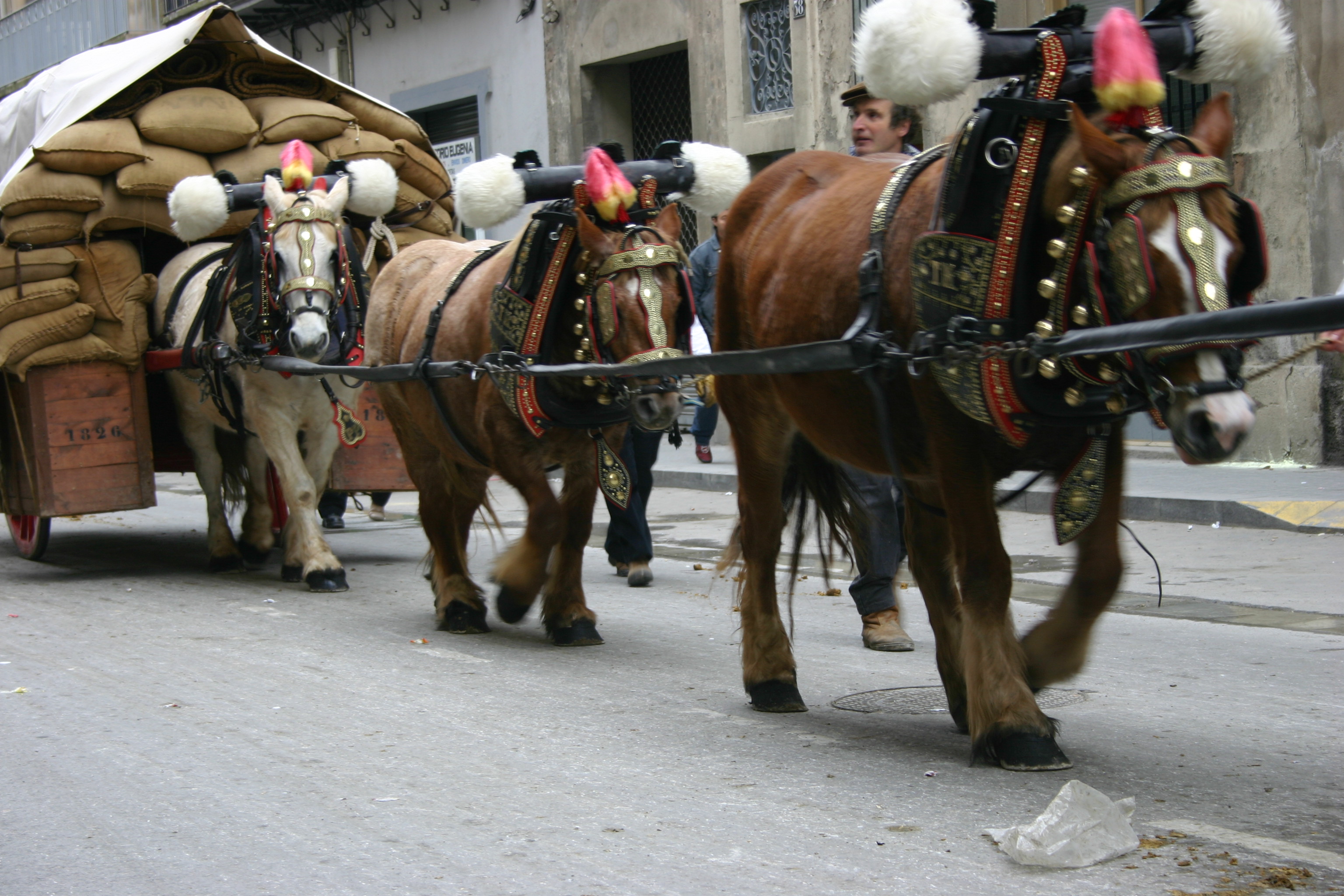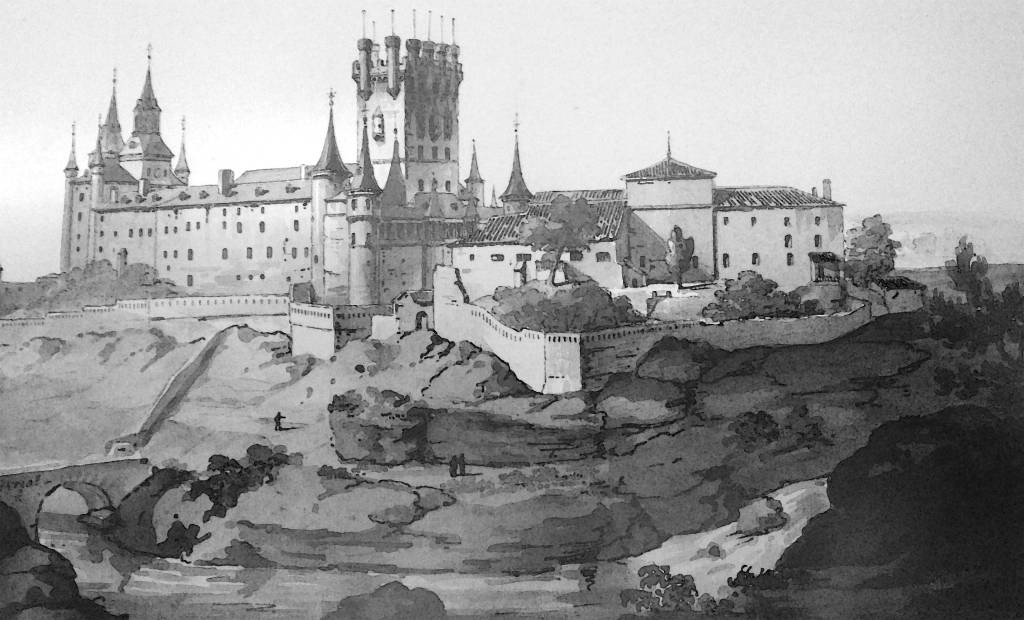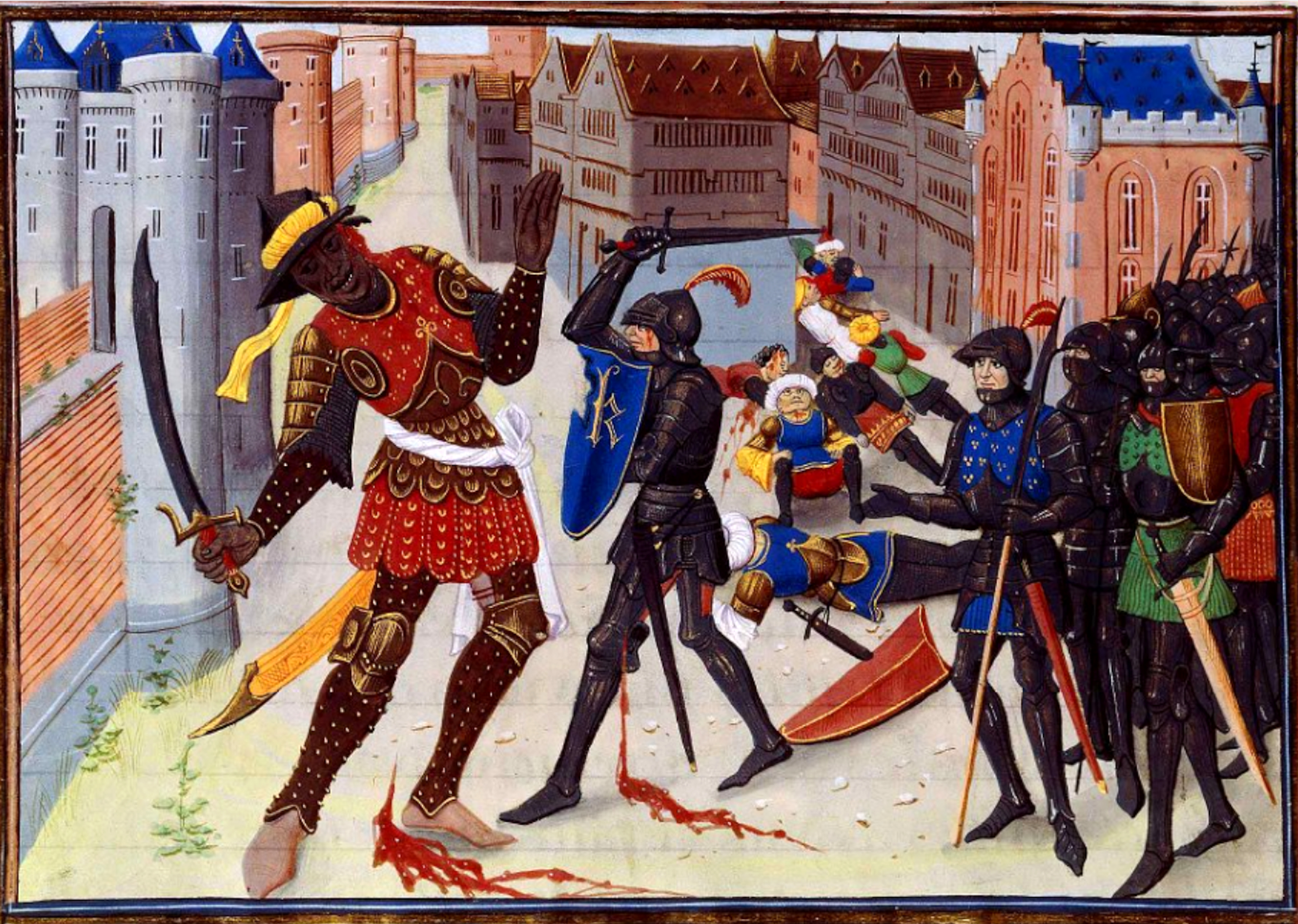|
Zamarramala
Zamarramala is a village in the municipality of Segovia, Castile and León, Spain. It stands above its surroundings and can be seen from Segovia proper. In the past, it had its own town hall, but it became part of Segovia in the 1970s. Fiesta de Santa Águeda Zamarramala is known for its Fiesta de Santa Águeda, declared a Fiesta of National Tourist Interest () in 1972. The Las Águedas festival (February 5), one of the oldest in Spain, which has been recorded since 1227, and which remembers the value of the Zamarriega women who, according to legend, would have helped to reconquer the Alcázar of Segovia, taken from the Saracens file:Erhard Reuwich Sarazenen 1486.png, upright 1.5, Late 15th-century History of Germany, German woodcut depicting Saracens ''Saracen'' ( ) was a term used both in Greek language, Greek and Latin writings between the 5th and 15th centuries to .... In this Festival, two "mayors" are elected to govern the town for two days. Participation is mostly fe ... [...More Info...] [...Related Items...] OR: [Wikipedia] [Google] [Baidu] |
Fiestas Of National Tourist Interest Of Spain
The category of Fiesta of National Tourist Interest (, , / , ) in Spain is an honorary designation given by the General Secretariat of Tourism of the Ministry of Industry (Spain), Ministry of Industry, Trade and Tourism of the Government of Spain to fiestas, festivals or events held in Spain that offer real interest as national tourism attractions. This category was created in 1979 to adjust the new competences of the ministries in the transition. Since 1965, and until 1979, there was only the declaration of Fiesta of Tourist Interest, and with the new reform the honorary designations were divided into three tiers: Festivals of International Tourist Interest, Festivals of National Tourist Interest and Festivals of Tourist Interest. After five years holding this distinction, events with a wide international projection that meet certain requirements, may be elevated to the higher distinction of Fiestas of International Tourist Interest of Spain, Fiesta of International Tourist Intere ... [...More Info...] [...Related Items...] OR: [Wikipedia] [Google] [Baidu] |
Agatha Of Sicily
Agatha of Sicily () is a Christian saint. Her feast is on 5 February. Agatha was born in Catania, part of the Roman Province of Sicily, and was martyred . She is one of several virgin martyrs who are commemorated by name in the Canon of the Mass. Agatha is the patron saint of Catania, Molise, Malta, San Marino, Gallipoli in Apulia, and Zamarramala, a municipality of the Province of Segovia in Spain. She is also the patron saint of breast cancer patients, rape victims, martyrs, wet nurses, bell-founders, and bakers, and is invoked against fire, earthquakes, and eruptions of Mount Etna. Early history Agatha is buried at the Badia di Sant'Agata, Catania. She is listed in the late-6th-century associated with Jerome, and the , the calendar of the church of Carthage, . Agatha also appears in one of the of Venantius Fortunatus. Two early churches were dedicated in her honor in Rome, Sant'Agata in Trastevere and notably the Church of Sant'Agata dei Goti in Via Mazzarino, a tit ... [...More Info...] [...Related Items...] OR: [Wikipedia] [Google] [Baidu] |
Segovia
Segovia ( , , ) is a city in the autonomous communities of Spain, autonomous community of Castile and León, Spain. It is the capital and most populated municipality of the Province of Segovia. Segovia is located in the Meseta central, Inner Plateau of the Iberian Peninsula, near the northern slopes of the Sistema Central mountain range. Housing is nestled on a bend of the Eresma River, Eresma river. The city is famous for its historic buildings including three main landmarks: Aqueduct of Segovia, its midtown Roman aqueduct, Segovia Cathedral, its cathedral (one of the last ones to be built in Europe following a Gothic style), and the Alcázar of Segovia (a fortress). The city center was declared a World Heritage Site by UNESCO in 1985. Etymology The name of Segovia is of Celtiberians, Celtiberian origin. Although historians have linked its old name to ', the discovery of the original Ancient Rome, Roman city of Segobriga near Saelices discarded this possibility. The name of "S ... [...More Info...] [...Related Items...] OR: [Wikipedia] [Google] [Baidu] |
Autonomous Community
The autonomous communities () are the first-level administrative divisions of Spain, created in accordance with the Spanish Constitution of 1978, with the aim of guaranteeing limited autonomy to the nationalities and regions that make up Spain. There are 17 autonomous communities and two autonomous cities (Ceuta and Melilla) that are collectively known as "autonomies". The two autonomous cities have the right to become autonomous communities. The autonomous communities exercise their right to self-government within the limits set forth in the constitution and organic laws known as Statutes of Autonomy, which broadly define the powers that they assume. Each statute sets out the devolved powers () for each community; typically those communities with stronger local nationalism have more powers, and this type of devolution has been called ''asymmetrical'' which is on the whole seen as advantageous, able to respond to diversity. Despite the Constitution not setting a mandat ... [...More Info...] [...Related Items...] OR: [Wikipedia] [Google] [Baidu] |
Castile And León
Castile and León is an Autonomous communities of Spain, autonomous community in northwestern Spain. Castile and León is the largest autonomous community in Spain by area, covering 94,222 km2. It is, however, sparsely populated, with a population density below 30/km2. While Capital of Castile and León, a capital has not been explicitly declared, the seats of the executive and legislative powers are set in Valladolid by law, and for all purposes that city (also the most populated municipality) serves as the ''de facto'' regional capital. Castile and León is a landlocked region, bordered by Portugal as well as by the Spanish autonomous communities of Galicia (Spain), Galicia, Asturias, Cantabria, the Basque Autonomous Community, Basque Country, La Rioja (Spain), La Rioja, Aragon, Castilla–La Mancha, the Community of Madrid and Extremadura. Chiefly comprising the northern half of the Meseta Central, Inner Plateau, it is surrounded by mountain barriers (the Cantabrian Mount ... [...More Info...] [...Related Items...] OR: [Wikipedia] [Google] [Baidu] |
Provinces Of Spain
A province in Spain * , ; grammatical number, sing. ''provincia'') * Basque language, Basque (, grammatical number, sing. ''probintzia''. * Catalan language, Catalan (), grammatical number, sing. ''província''. * Galician language, Galician (), grammatical number, sing. ''provincia''. is a political divisions of Spain, territorial division defined as a collection of municipalities of Spain, municipalities. The current provinces of Spain correspond by and large to the provinces created under the purview of the 1833 territorial division of Spain, 1833 territorial re-organization of Spain, with a similar predecessor from 1822 territorial division of Spain, 1822 (during the Trienio Liberal) and an earlier precedent in the 1810 Napoleonic division of Spain into 84 prefectures. There are many other groupings of municipalities that comprise the local government in Spain, local government of Spain. The boundaries of provinces can only be altered by the Spanish Parliament, giving ri ... [...More Info...] [...Related Items...] OR: [Wikipedia] [Google] [Baidu] |
Province Of Segovia
Segovia () is a province of central/northern Spain, in the southern part of the autonomous community of Castile and León. It is bordered by the province of Burgos in the north, Soria in the northeast, Guadalajara in the east, Madrid in the south, Ávila in the west and southwest, and Valladolid in the northwest. The average temperature ranges from 10 °C to 20 °C. Overview The province has a population of 149,286, of whom about 35% live in the capital, Segovia. Of the 209 municipalities in the province, more than half are villages with under 200 people. As of 2024, there are five municipalities with more than 5,000 inhabitants: * Real Sitio de San Ildefonso with 5,205. * Palazuelos de Eresma with 5,968. * Cuéllar with 9,530. * El Espinar with 10,145. * Segovia with 51,525. The name ''Segovia'' is said to be of Celtiberian origin, but also thought to be derived from the conquest and occupation of Castile by the Visigoths, a Scandinavian / Germanic tribe livi ... [...More Info...] [...Related Items...] OR: [Wikipedia] [Google] [Baidu] |
1972 In Spain
Events in the year 1972 in Years in Spain, Spain. Incumbents *Caudillo: Francisco Franco Births * Montse Ribé. * 29 February – Pedro Sánchez (Spanish politician), Pedro Sánchez, Prime Minister of Spain * 23 March – Víctor Baute, boxer * 27 March - Ignacio Garrido, golfer * 1 April - José María Valderas Martínez, Academic General Practitioner and health services researcher * 13 June - Caridad Rives Arcayna, politician. * 20 September - Ramon Tribulietx. Deaths *23 March - Cristóbal Balenciaga. *20 April – Jorge Mistral, actor (b. 1920 in Spain, 1920) See also * List of Spanish films of 1972 References 1972 in Spain, Years of the 20th century in Spain 1970s in Spain 1972 by country, Spain 1972 in Europe, Spain {{Spain-year-stub ... [...More Info...] [...Related Items...] OR: [Wikipedia] [Google] [Baidu] |
1227
Year 1227 ( MCCXXVII) was a common year starting on Friday of the Julian calendar. Events By place Europe * Spring – Livonian Crusade: The Livonian Brothers of the Sword and their Crusader allies (some 20,000 men) cross the sea ice from mainland Estonia, and defeat the last Estonian strongholds in the Battle of Muhu and the siege of the Valjala Stronghold in the Saaremaa islands. This marks the end of the Estonian campaign in the Livonian Crusade. The Sword Brothers conquer Danish Estonia, and Tallinn is given town rights under Riga law. * July 22 – Battle of Bornhöved: Count Adolf IV of Holstein – leading a coalition army from the cities of Lübeck and Hamburg, defeats the Danish-German forces of King Valdemar II, and the Welf nobleman Otto I (the Child). Adolf shakes off Danish supremacy and accepts an overlordship by the Archbishopric of Bremen under Archbishop Gerhard II of Lippe. Adolf expands his power and establishes new frontiers within th ... [...More Info...] [...Related Items...] OR: [Wikipedia] [Google] [Baidu] |
Alcázar Of Segovia
The Alcázar of Segovia is a medieval castle located in the city of Segovia, in Castile and León, Spain. It has existed since at least the 12th century, and is one of the most renowned medieval castles globally and one of the most visited landmarks in Spain. It has been the backdrop for significant historical events and has been home to twenty-two kings, along with notable historical figures. The fortress stands on a rocky crag at the western end of Segovia's Old City, which was declared a UNESCO World Heritage Site in 1985, above the confluence of the rivers Eresma River, Eresma and Clamores. Today, it is used as a museum and a military archives building since its declaration as a National Archive by a Royal Decree in 1998. It has also worked at times as a state prison, a Royal Artillery College, and a military academy. The Alcázar served both as a royal palace and a fortress for the List of Castilian monarchs, Castilian monarchs, and its architecture reflects the grandeur a ... [...More Info...] [...Related Items...] OR: [Wikipedia] [Google] [Baidu] |
Saracen
upright 1.5, Late 15th-century German woodcut depicting Saracens ''Saracen'' ( ) was a term used both in Greek and Latin writings between the 5th and 15th centuries to refer to the people who lived in and near what was designated by the Romans as Arabia Petraea and Arabia Deserta. The term's meaning evolved during its history of usage. During the Early Middle Ages, the term came to be associated with the tribes of Arabia. The oldest known source mentioning "Saracens" in relation to Islam dates back to the 7th century, in the Greek-language Christian tract '' Doctrina Jacobi''. Among other major events, the tract discusses the Muslim conquest of the Levant, which occurred after the rise of the Rashidun Caliphate following the death of the Islamic prophet Muhammad. The Roman Catholic Church and European Christian leaders used the term during the Middle Ages to refer to Muslims. By the 12th century, "Saracen" developed various overlapping definitions, generally conflatin ... [...More Info...] [...Related Items...] OR: [Wikipedia] [Google] [Baidu] |
Baile Alcaldesas
Baile ("dance" in Spanish) may refer to: * Baile (Spanish play), a Spanish dramatic form * Baile funk, a type of dance music from Rio de Janeiro * Baile, the Irish Gaelic word for a town, usually anglicized as "bally" or "balla" * Baile, the Scottish Gaelic word for a crofting township; see Township (Scotland) In Scotland a croft (land), crofting township is a group of farm, agricultural smallholdings (each with its own few hectares of pasture and arable land (in-bye land)) holding in common a substantial tract of unimproved upland grazing. Each town ... * Băile (other), several places in Romania {{disambiguation ... [...More Info...] [...Related Items...] OR: [Wikipedia] [Google] [Baidu] |







